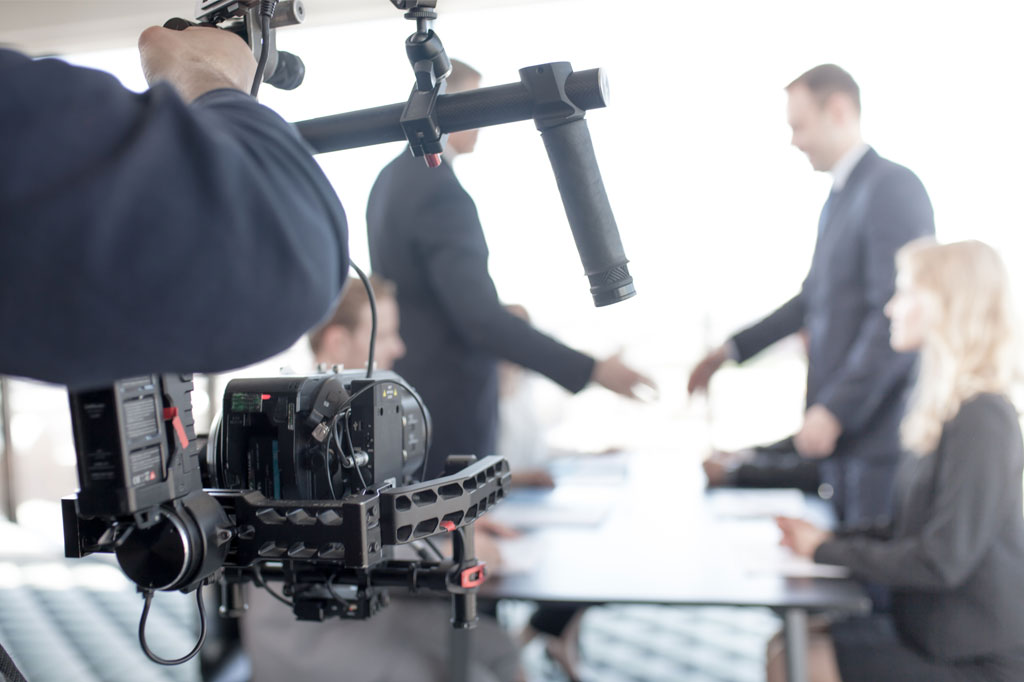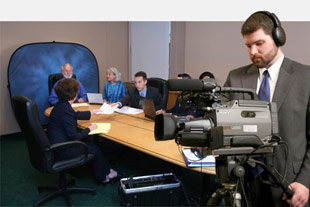Full-Service Legal Videography for Documenting Legal Proceedings.
Full-Service Legal Videography for Documenting Legal Proceedings.
Blog Article
Why Lawful Videography Is Crucial for Accurate Legal Record-Keeping
In the world of legal procedures, the accuracy of record-keeping is critical, and lawful videography becomes a vital tool in this context. By recording the subtleties of verbal and non-verbal communication, it substantially reduces the potential for misinterpretation that can go along with traditional written documents. Additionally, the conservation of genuine aesthetic evidence not just improves the reliability of testaments however also adds to a comprehensive account of occasions. As we discover the diverse advantages of legal videography, one should consider its effects for the future of judicial integrity and transparency - legal videography.
Significance of Visual Proof
Establishing the importance of aesthetic evidence in lawful proceedings is critical for ensuring accurate record-keeping and boosting the total integrity of the judicial procedure. Visual proof serves as an essential tool in recording events, conditions, and various other essential information that might be essential to a case. Unlike written accounts, which are vulnerable to analysis and bias, visual recordings offer a purpose, unalterable representation of realities as they took place.


This kind of evidence can capture a range of elements, consisting of witness habits, environmental context, and physical proof, every one of which may influence judicial end results. By offering a clear and thorough visual narrative, lawful videography removes ambiguity and helps to preserve the authenticity of the evidence.
Moreover, aesthetic proof can be crucial in minimizing conflicts over valid inconsistencies, as it enables a direct contrast versus statement and various other recorded documents. In an age where digital modern technology is progressively prevalent, the capacity to present visual proof properly can substantially enhance the overall top quality of lawful procedures. Ultimately, the consolidation of aesthetic proof not just strengthens the documents procedure however also strengthens public trust fund in the judicial system by advertising openness and responsibility.
Enhancing Testament Reliability
The assimilation of lawful videography into court procedures dramatically improves the reliability of witness testament. By recording the subtleties of spoken and non-verbal communication, video recordings supply a more comprehensive representation of a witness's demeanor, feelings, and integrity. This aesthetic documentation allows jurors to observe the witness's body language, facial expressions, and total behavior, which are essential components that can influence their assumption of testament reliability.
Additionally, legal videography minimizes the potential for false impression or distortion of testament that might happen in written transcripts. Customers can see and hear the statement as it existed, ensuring that the context and tone are preserved. This authenticity cultivates a higher sense of trust fund among jurors, who might be extra likely to think statement that they can witness firsthand.
In addition, the visibility of video footage can discourage witnesses from giving deceptive or exaggerated declarations, as they understand that their testament is being recorded. This accountability strengthens the integrity of the judicial procedure. Inevitably, legal videography acts as a vital tool in making certain that witness testimony is not just accurately portrayed but likewise watched with increased trustworthiness by all events included.
Comprehensive Document Preservation
Comprehensive document conservation is essential for maintaining the stability of legal process. useful reference Lawful videography works as an important tool in this procedure, giving an accurate visual and auditory account of statements, depositions, and various other essential moments in an instance. Unlike conventional written records, video clip recordings capture the subtleties of body language, tone, and feeling, which are crucial for understanding the context and intent behind declarations made during legal procedures.

In addition, the capability to examine video evidence allows lawful specialists to identify critical details that might have been overlooked in written records. By preserving a comprehensive archive of legal procedures with videography, law office can support the highest possible standards of precision and liability, ultimately contributing to a fairer judicial procedure.
Streamlining Legal Procedures
Simplifying lawful procedures is necessary for boosting efficiency and lowering delays within the judicial system. Legal videography serves as an essential device in achieving this goal by giving clear and precise aesthetic paperwork of court hearings, depositions, and testaments. This modern technology allows for real-time recording, making sure that all spoken and non-verbal cues are recorded, which can help with quicker resolution of conflicts.
The combination of videography into legal procedures lessens dependence on traditional techniques, such as prolonged records, which can be time-consuming to create and examine. By having access to tape-recorded footage, attorneys can promptly reference essential minutes, boosting their ability to prepare and present cases efficiently. This immediacy additionally helps in the clarifying of statements, lowering the possibility for misconception.
Moreover, aesthetic paperwork cultivates a much more interesting court experience for jurors, aiding them to understand intricate details more conveniently. Ultimately, lawful videography enhances communication among all parties included, from lawyers to judges to jurors, consequently promoting a much more reliable judicial procedure (legal videography). In an era where time is essential, embracing this technology is crucial visite site for the modern-day lawful landscape
Admissibility in Court
Exact documents is essential not only for effectiveness but likewise for making certain that evidence is permissible in court. Legal videography serves as an important device in this procedure, providing a trustworthy aesthetic document of testaments, declarations, and events.
To be deemed acceptable, lawful videography should abide by well established procedures, such as correct tools use, proper illumination, and clear sound capture. In addition, it is crucial to have actually certified videographers that understand the legal demands bordering evidence collection. The chain of protection should additionally be kept to avoid any type of cases of meddling or alteration.
Furthermore, lawful videography can improve the persuasiveness of evidence by providing jurors with a direct view of the statement, enabling a much more involved understanding of the instance. In recap, the combination of legal videography into record-keeping not only sustains performance yet likewise strengthens the stability and admissibility of evidence in court process.
Final Thought
In final thought, lawful videography plays a crucial role in guaranteeing accurate lawful record-keeping by offering unbiased aesthetic documentation. Inevitably, the incorporation of legal videography right into the judicial process promotes openness and reinforces public depend on in the stability of the lawful system.
Report this page